Portuguese midfielder Renato Sanches was touted as the next big thing when he was still plying his trade at Benfica. However, he seemed to find no luck in Germany after his big-money move to Bayern Munich in the summer of 2016. After less than 1000 minutes of game time in 2016/17, the talented central midfielder was sent out on loan the very next season to Swansea City – though ultimately, the loan proved to be rather disastrous.
Sanches went back to Bayern Munich for the 2018/19 Bundesliga season but found it even more difficult to break into the first team even with the long absence of Corentin Tolisso and with manager Niko Kovač preferring Thiago Alcântara, James Rodríguez, and Leon Goretzka ahead of him.
The 1997-born midfielder is actually still quite young and obviously still has a lot of time and room for improvements but after three unconvincing seasons, some people have already speculated that he is a flop and an early-peaker. A move to Lille was a smart move both by the club and the player. From what we can see this season, it has been pretty much a win-win-win situation with Bayern Munich successfully offloading a fringe player, Lille getting a highly-talented man who can contribute a lot with his heart set on proving his doubters wrong, and the player himself gets a good amount of game time and experience as well as the chance to redeem himself.
In this tactical analysis/scout report, we’ll be taking a look at how Sanches is doing at Lille and how far he has improved/developed since his time at Bayern Munich. We’ll also take a look at how he fits into Lille’s tactics and what’s his role in the team.
How Sanches fits in Lille’s tactics and comparison to Bayern Munich 2018/19
This season Christophe Galtier preferred to use 4-4-2 as his system although we can always see different approaches and tendencies in certain games as he tweaks his tactics.
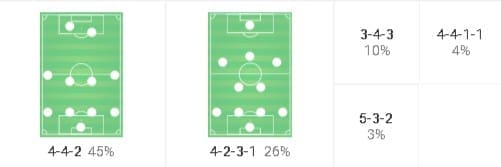
Earlier this season, Sanches was mostly played in his favoured central-midfielder position, usually partnering with Xeka. However, starting in December, Galtier started playing Sanches as a wide midfielder, mainly on the right side but sometimes on the left as well. Below is Lille’s most commonly used setup this season.
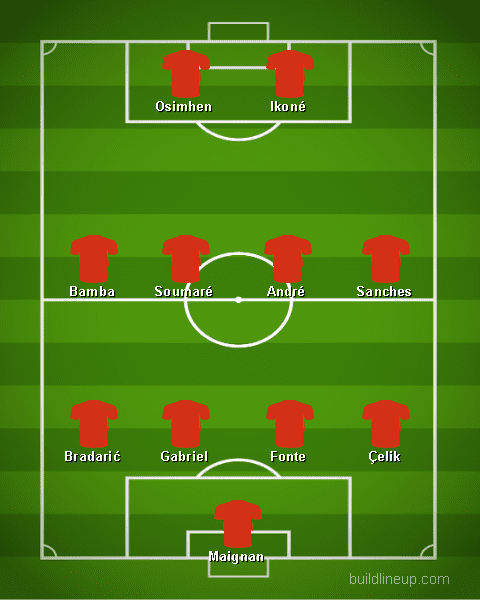
It turns out that playing Sanches on the wing is much more beneficial both for the player and the team which we will discuss further later in this tactical analysis/scout report.
Galtier’s Lille are not really a possession-heavy team. Though they do have the tendency to play from the back with the goalkeeper preferring to play the ball towards either of the two centre-backs in a goal-kick situation, they tend to be straightforward and vertical-oriented in the build-up.
Lille don’t necessarily rely on long balls to bypass the midfield though, but they do rely on moving the ball with pace and active third-man movements to progress and attack. However, in certain games, against certain teams with certain setups, they’d be forced to play more long balls either into the space behind or in front of the opposing defence where they’ll then try to win the first or second ball in and around the offensive third.
This is quite different compared to Kovač’s Bayern Munich, who tended to be more patient and dominate possession. Although what’s similar is that both teams tend to break forward very quickly in transition.
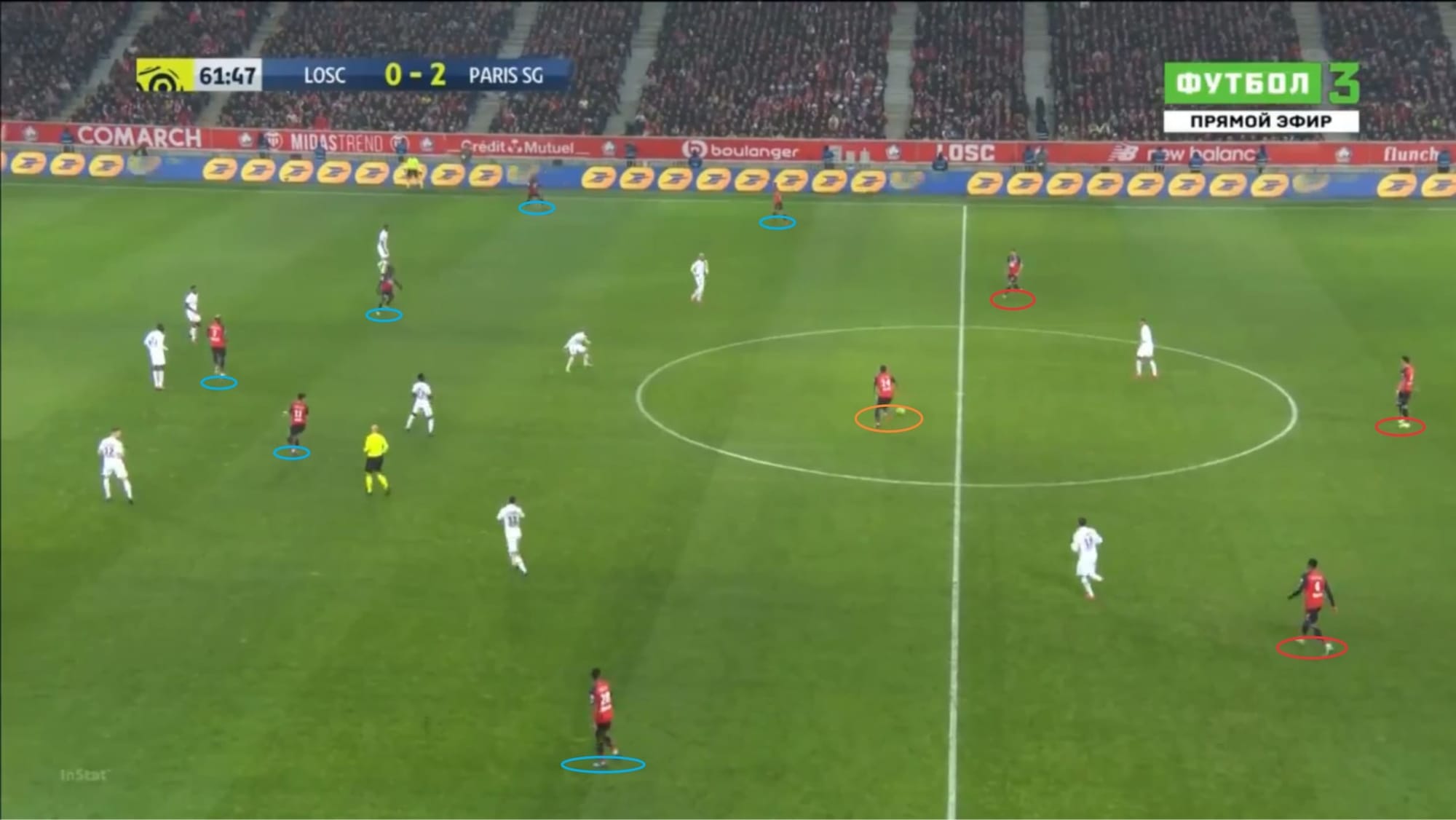
Lille would create this 3-1-6 attacking shape in the build-up. As you can see, Sanches is currently sitting high and wide, allowing the full-back or central midfielder to occupy the half-space. Sanches tends to sit near the touchline much more often rather than in the half-space although, occasionally, he will also rotate positions with the marauding full-back or central midfielder and sit in the half-space while the full-back or central midfielder sit wide.
When the ball is moved to either flank, Lille will create passing triangles like this so they can rotate the ball and create a breakthrough on the wing.
This is actually rather similar to Bayern Munich.
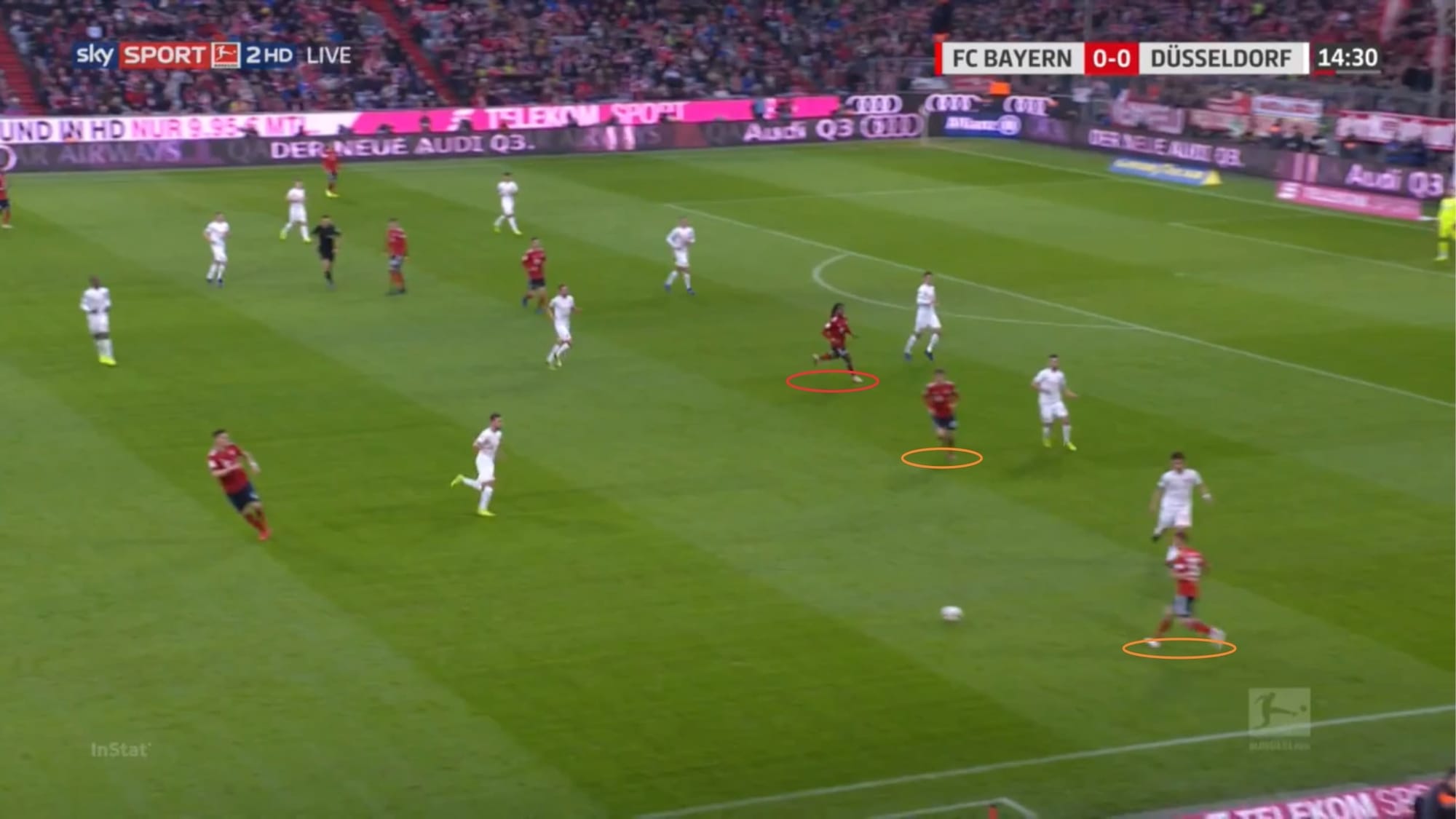
As you can see above, Bayern Munich would often create a 3-1-6 shape as well in attack. In this particular game, they were playing in a 4-3-3 formation. The full-back, winger, and central midfielder would create a triangular shape as well on the wings to rotate the ball. At Bayern Munich, however, Sanches rarely sat wide and near the touchline but tended to occupy the half-spaces and central areas.
However, despite the similar attacking structure and tendency to rotate the ball on the wings, Lille are a team that love to attack centrally, meanwhile, Bayern Munich from 2018/19 tended to break through the flanks and create chances through crosses.
Defensively, Lille are also different compared to Bayern Munich although there are a few similarities.
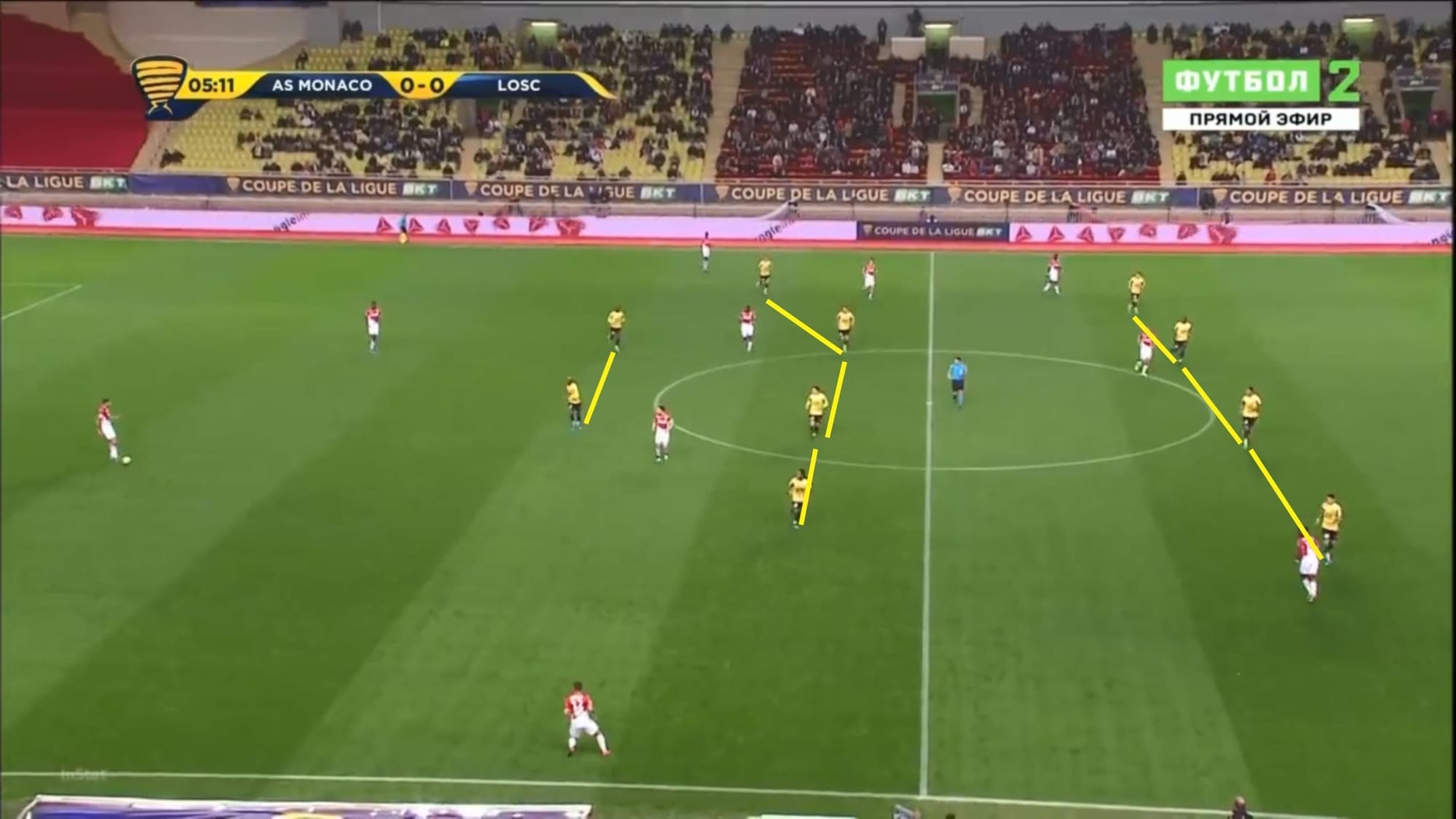
Unlike Bayern Munich who tended to defend with a high block and high press, Lille tended to defend with a mid-block (or medium-high block against weaker teams). Lille’s first line of pressure is moderately aggressive and less aggressive than Bayern’s.
Just like Bayern, Lille also tend to be ball-oriented in pressing. And while one player presses the ball, the others will mark the passing options or passing lane towards the passing options, usually via tight man-oriented marking or positional/zonal marking (positioning himself between two opposition players to anticipate the ball being played towards either player).
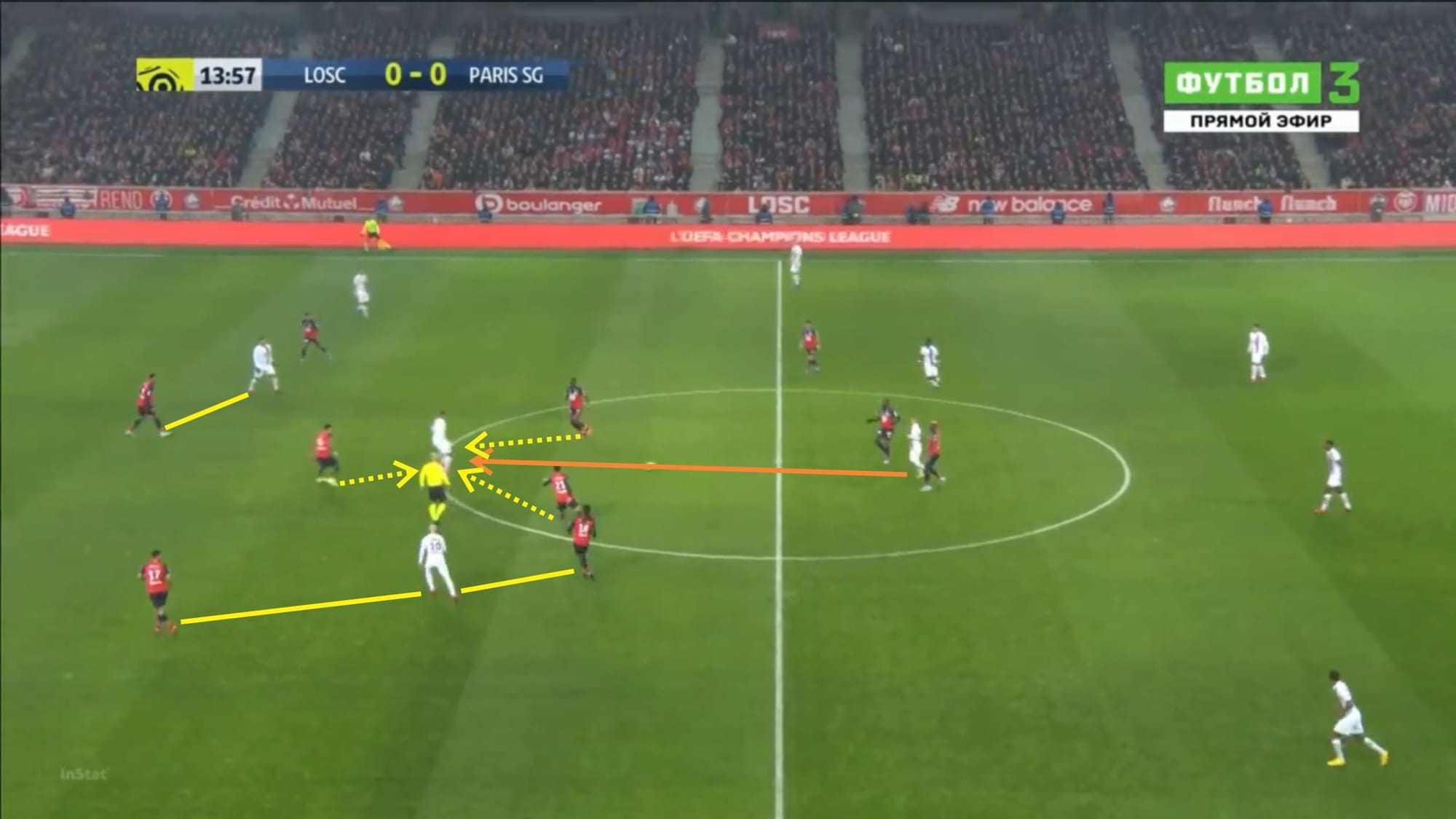
Lille, however, would immediately press aggressively and crunch the space in the middle once the ball is played inside the block in the middle third. As you can see, Sanches also plays his part in defence by moving narrower and positioning himself to anticipate a pass towards the nearest opposition passing option.
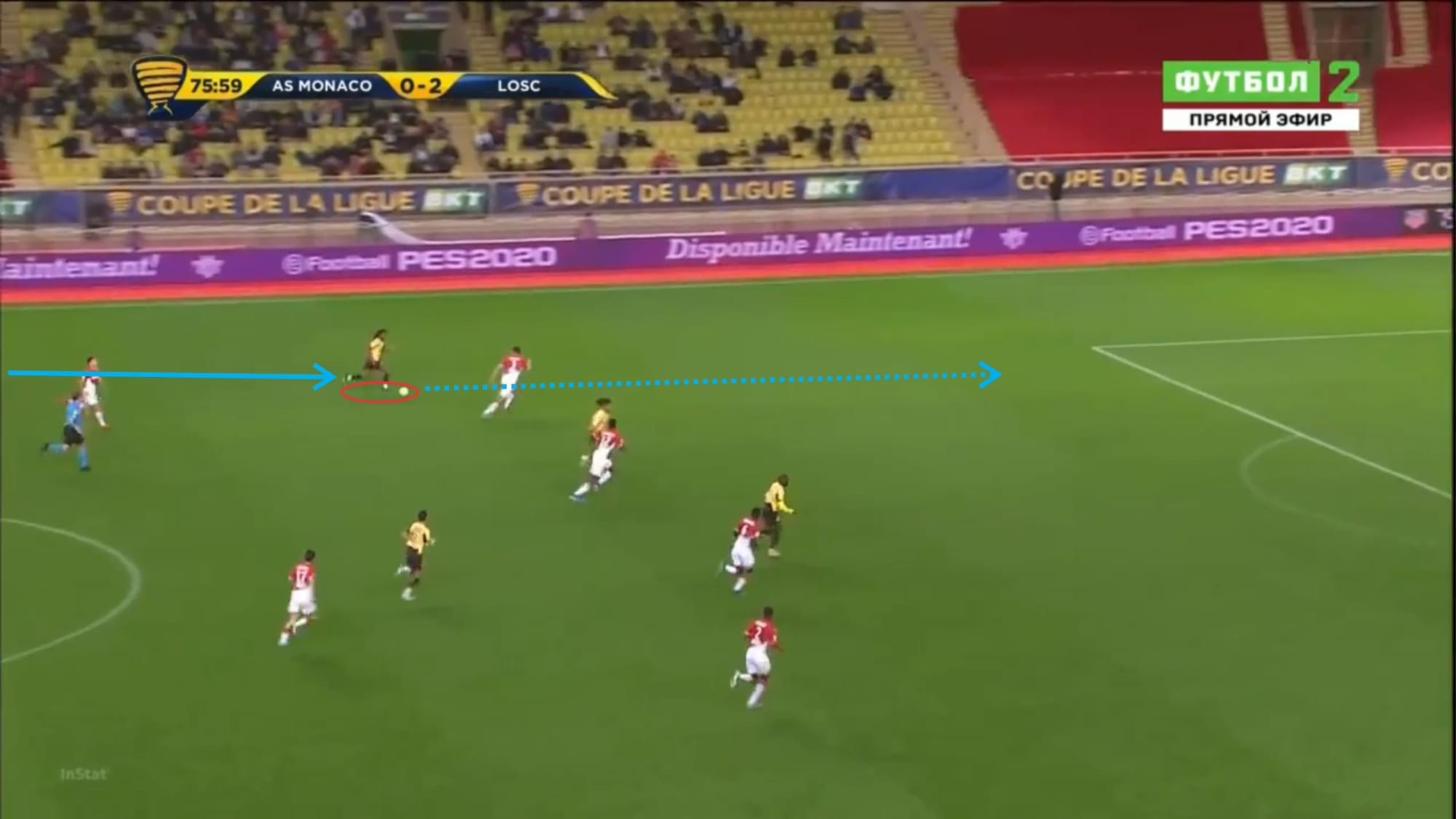
Lille are extremely quick on the break but tend to progress the ball forward via driving runs or quick passing exchanges rather than long passes. This is why the presence of a highly athletic and energetic ball-carrier like Sanches is important. In the picture above, for example, Sanches received the ball in his own half and brought it into the opposition box all by himself. Lille had a big chance to score a goal in this situation after Sanches passed the ball towards a free teammate inside the box but the shot was blocked.
At Bayern, Sanches was also quite useful in counter-attacks due to his burst of acceleration and pace, strength, agility, balance and dribbling skills. Once he’s already into his stride, he’s really hard to stop. Sanches also had the tendency to bring the ball out of his own half in attacking transitions but tended to give it towards more creative players on the flanks at Bayern Munich.
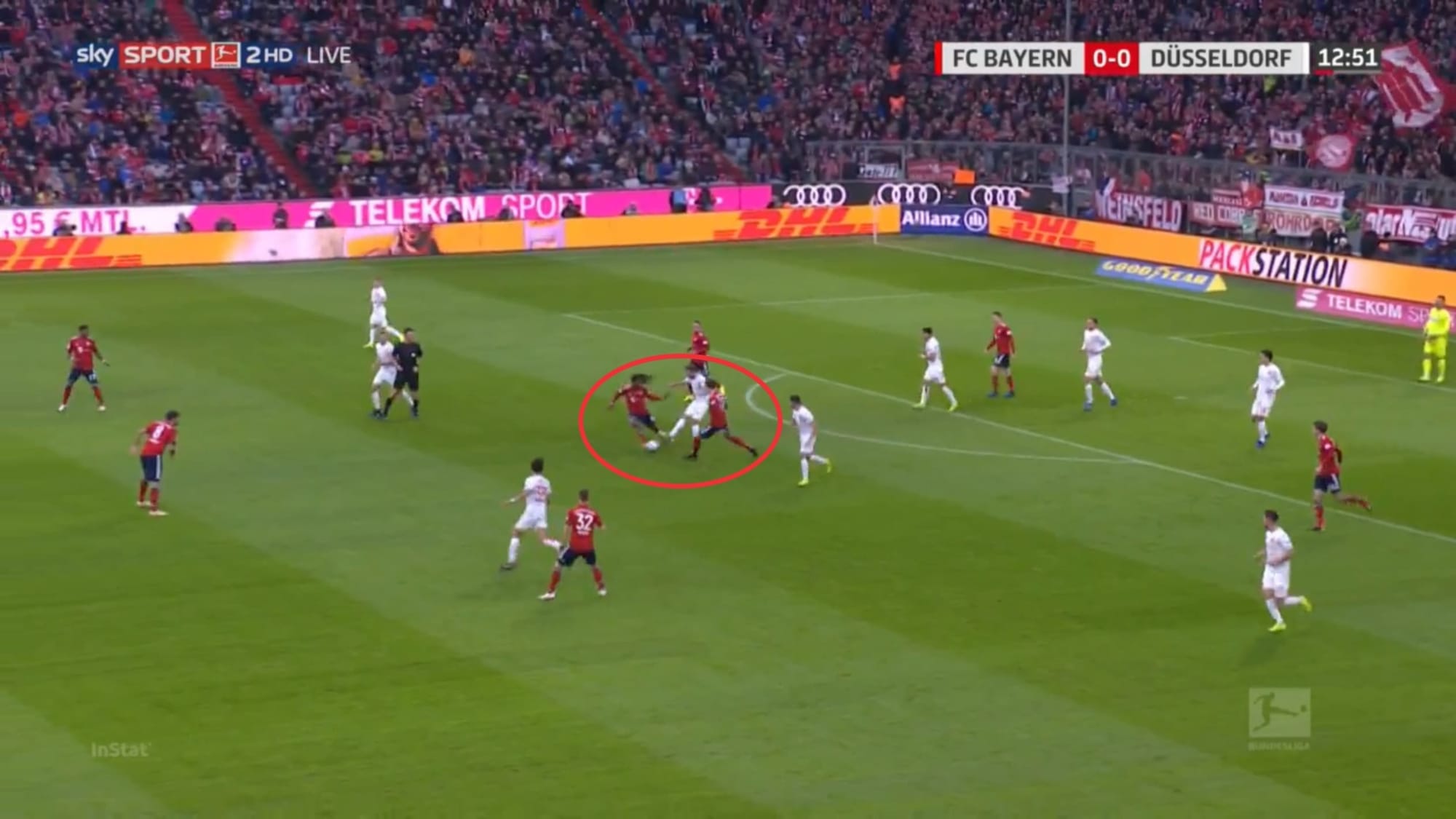
Both Lille and Kovač’s Bayern Munich use counter-pressing in their defensive transition to win the ball back high up the pitch or at least delay the opposition’s counter-attack.
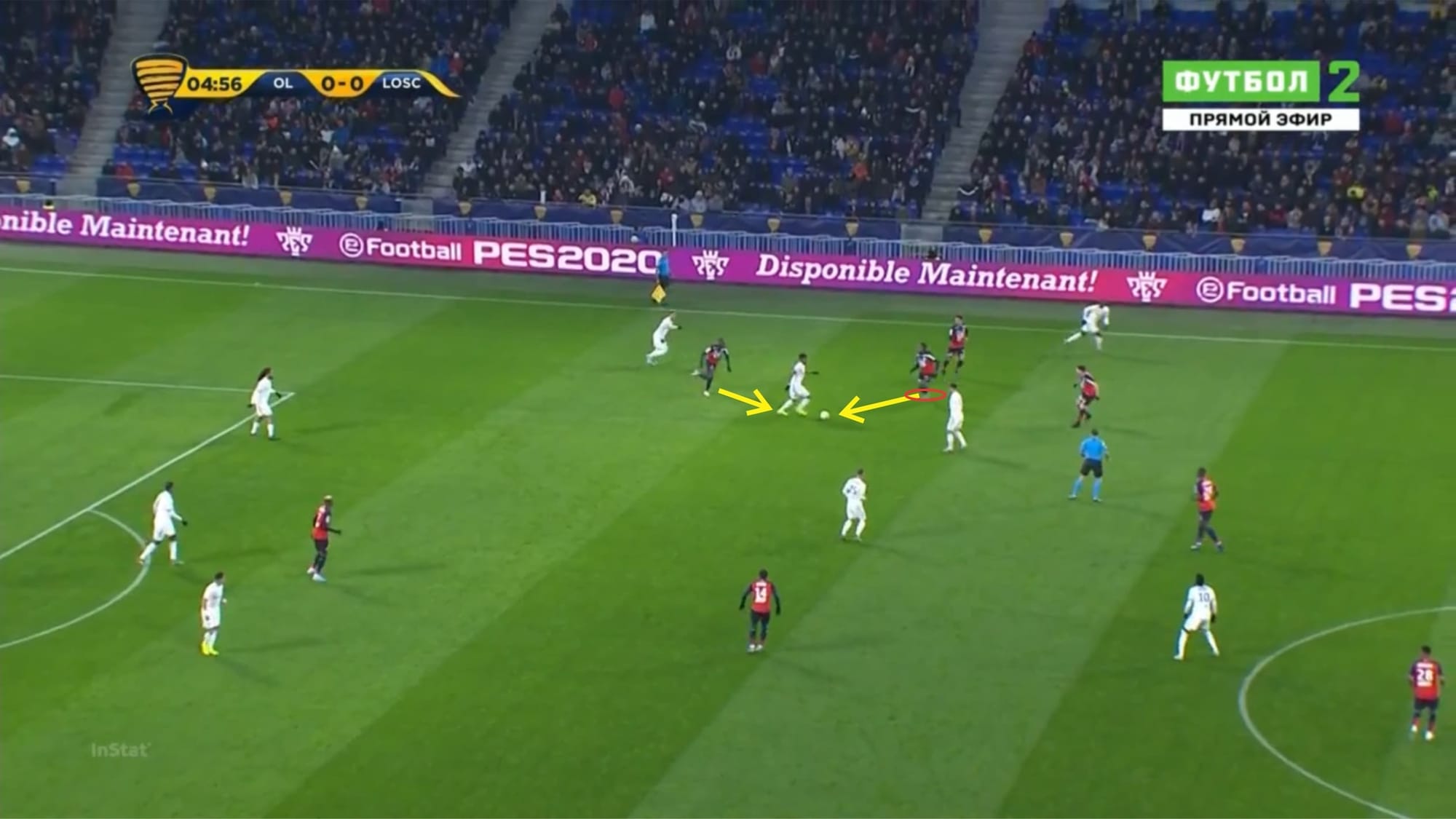
Sanches is already familiar to this and at Lille, he always shows how useful he is in these counter-pressing situations, utilising his quickness, aggression, and strength to press and put the ball-carrier in a highly uncomfortable position and force him into making a mistake.
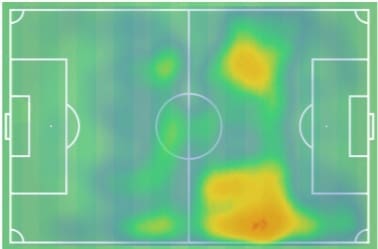
As you can see above, there’s also a difference when it comes to positional tendencies when Sanches is at Lille compared to when he was at Bayern (see the picture below).
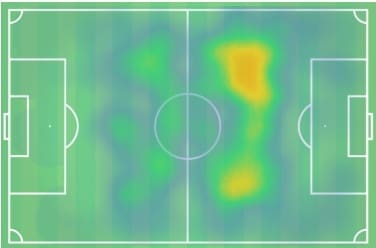
As you can see, Sanches is much more active in wider areas and half-spaces at Lille, meanwhile, at Bayern Munich, he was more limited to central areas and half-spaces. This is, of course, due to Sanches often being played as a wide midfielder at Lille.
Sanches is apparently more active in his own half at Lille compared to his time at Bayern. He’s more active in moving and looking for spaces as well as tracking back and helping his team defend at Lille which explains his increased attacking and defensive output numbers, and this will be explained in more detail later in this tactical analysis/scout report.
Has he actually improved?
In terms of individual ability, not much actually. There are definitely some improvements in his game but not significant. However, he is currently benefitting from playing in a system and role that requires a lot of athleticism, aggression, and offensive and defensive discipline which are apparently his strongest attributes. He also possesses impressive attacking flair and creativity, as well as great technical ability which are all definitely very good attributes to have as a wide midfielder.
His weak spots, however, are still visible and he hasn’t really improved a lot in those areas.
Firstly, the lack of concentration and awareness is still apparent in his game. Sanches has this tendency to check over his shoulder once or twice prior to receiving the ball which is good, but once it reaches his feet, his eyes are fixed on the ball and he doesn’t check where his opponents his teammates are. This is why he concedes possession needlessly rather often as his opponents are able to sneak behind him and intercept the ball from him before he gets to it. Or often, his opponents are also able to steal the ball from him as he tries to make a turn but is unaware of an opposing player behind him. This, of course, is also heavily linked with his second weakness – decision making.
Very often, Sanches has a lot of good options to choose from but ultimately decids to choose the more difficult route. His decision making apparently hasn’t really improved since his time at Bayern Munich. This doesn’t mean that the player always makes bad decisions though, but it means that he makes bad decisions very often.
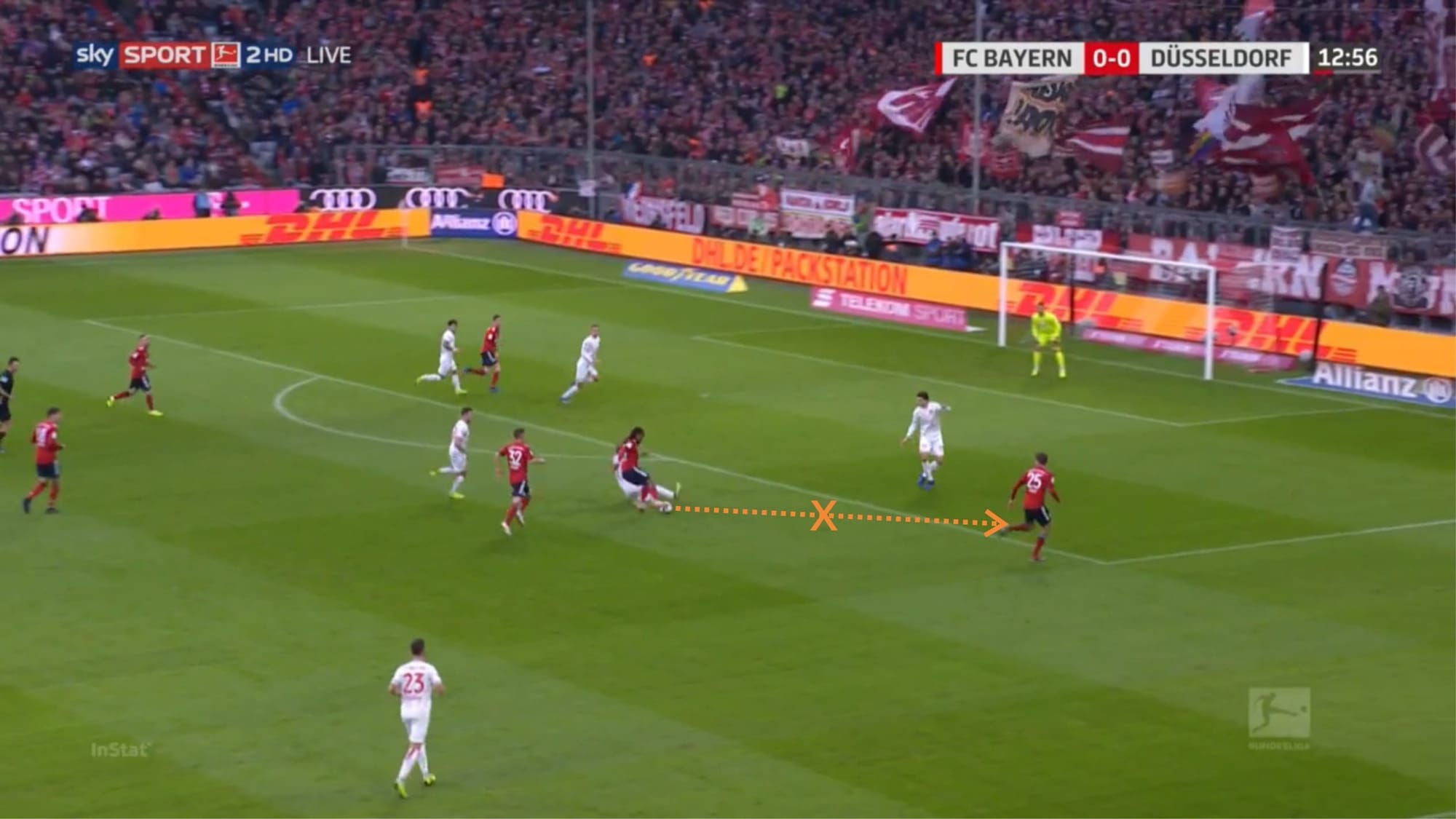
For example, above you can see Sanches having possession of the ball at the edge of the box with an option to pass the ball onto the path of Thomas Müller who’s making a run into the box. The opposing player, supposedly marking the passing lane towards Müller, still had some distance to cover and a perfectly weighted pace towards Müller could set him free inside the box.
However, instead of doing that, Sanches chose to try to dribble the ball inside himself, which didn’t work. Linking back to his lack of concentration and awareness, Sanches didn’t see an opposing defender coming towards him in this situation, which is why he felt that dribbling inside was a safe move and a good decision. Once Sanches made the turn with the ball, the opposing defender immediately tackled and stole the ball from him, resulting in a wasted chance for Bayern Munich.
Pretty much the same thing can be seen a lot of times now at Lille. Above is one of the many examples.
Sanches had possession of the ball down the right-wing. Instead of exchanging one-two touch passes with Benjamin Andrém which could have helped drag the Lyon left-back out and free up space on the right flank for him, he decided to drive forward himself.
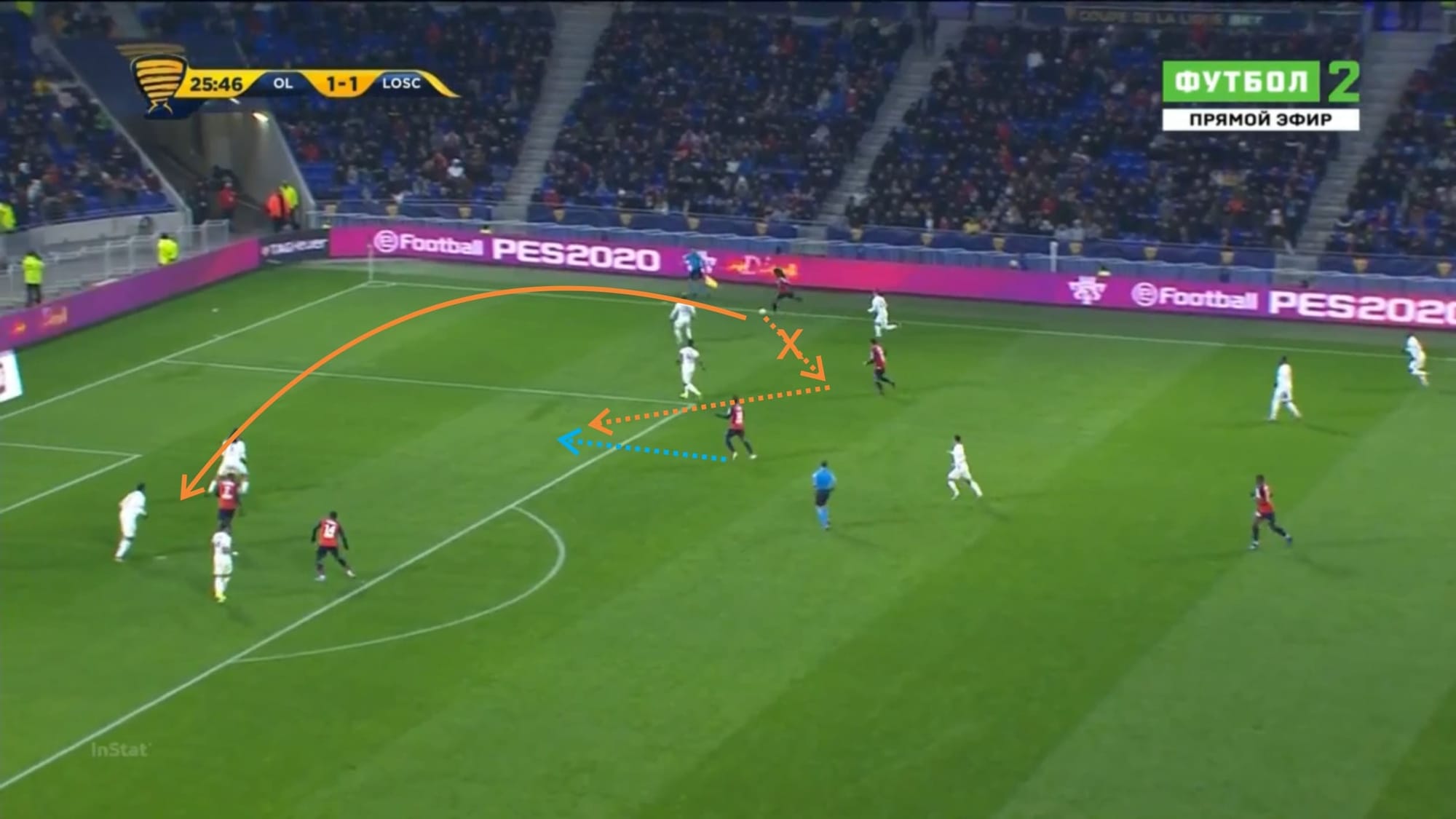
After shrugging off the challenge of Maxence Caqueret, he actually succeeded to free himself up on the right flank. In this situation, he had time to look up and make his decision. Ultimately, instead of playing the ball to André, who could have played the ball to Ikoné and potentially create a big chance for Lille, he decided to attempt a poor cross into the box. Tthe ball found absolutely nobody inside the area. Again, this is also linked to his lack of concentration and awareness.
Thirdly, Sanches hasn’t really improved much as a passer. He still has poor control of pace and accuracy of his passes. A lot of his passes are either hit with too much or too little power which can make it a bit difficult for the receiver to receive the ball comfortably despite the pass itself still being accurate. A lot of times though, the poor control of power when passing the ball will eventually lead to losing the ball. Some other times, Sanches managed to hit the ball with perfect pace, but the pass is simply inaccurate. However, the former happens more often than the latter.
Overall, this season, Sanches has recorded an average of 35 passes per game with 81% accuracy. That average and success rate is a combination of when he plays as a central midfielder and a wide midfielder, thus a fairly high number. When playing as a wide midfielder, Sanches averages 37 passes per game with 67% accuracy which is fairly low even for a wide player. Meanwhile, as a central midfielder, he averages 38 passes per game with a 90% success rate this season, which is quite normal to see amongst central midfielders.
Despite his still visible weaknesses, there are actually some things that he did improve on while at Lille.
First off, Sanches is visibly a bit more active and contributes more in defence. Though in terms of defensive awareness and prowess he hasn’t improved significantly. Still, this season it’s apparent that Sanches attempts more defensive actions compared to last season. He runs a lot and presses a lot which can be positive at times although odten, he’ll close down the ball-carrier and leave the man he’s supposed to mark without putting him in his cover shadow/blocking the passing lane, which opens up space for the opposition to progress.
His defensive contributions are even more apparent in defensive transitions.
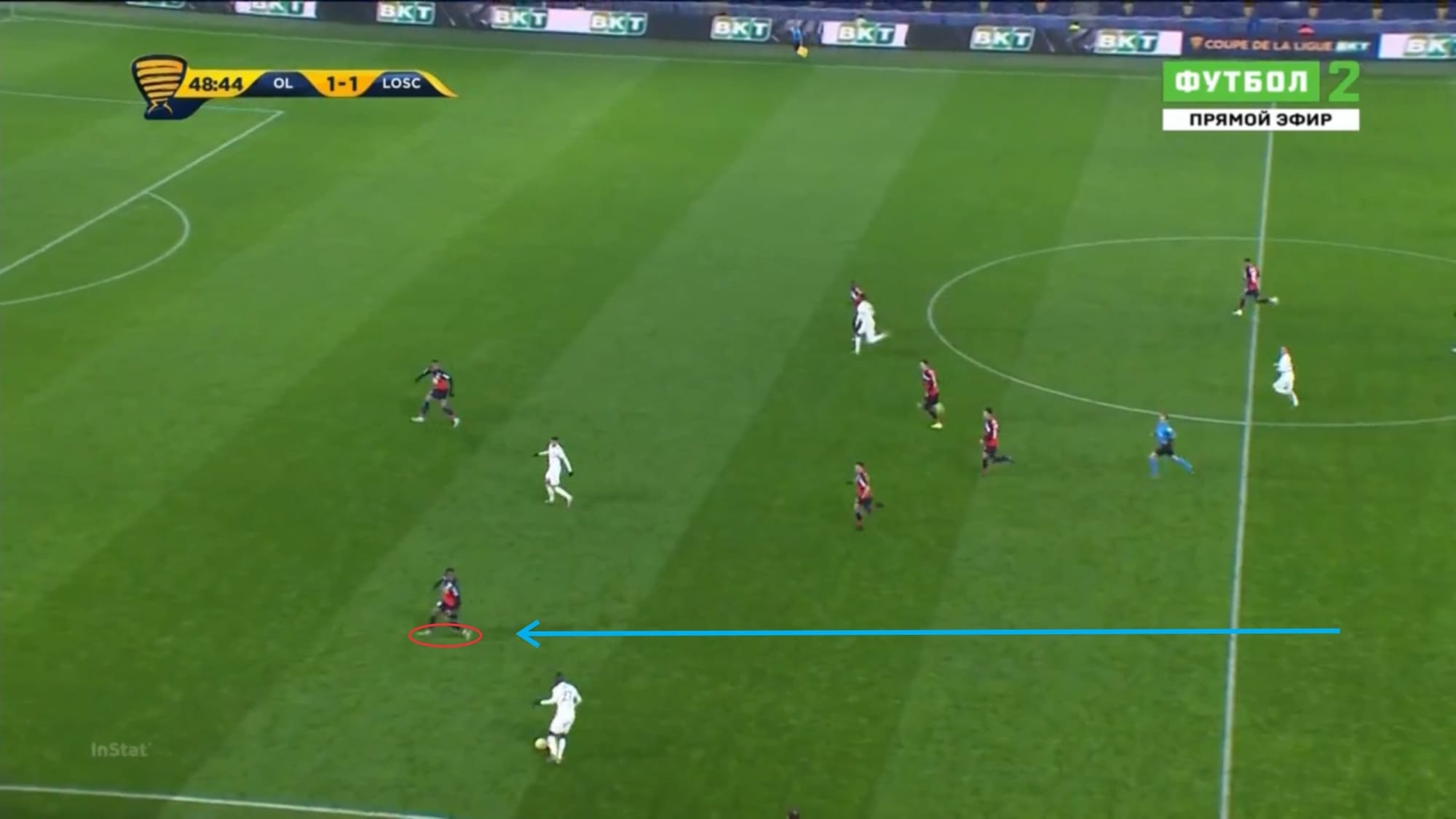
Above you can see Lille receiving Lyon’s quick counter-attack in a transition. Sanches immediately sprinted back into his own half and covered the right-back’s area upon seeing his team losing possession upfront and the opposing team trying to break quickly.
Here you can see his positioning in a 1v1 defensive situation. He allows the ball-carrier (Maxwel Cornet) some space, which is a smart move as there’s a risk he can be beaten in a 1v1 duel due to the explosiveness and pace that the winger possesses. However, Sanches doesn’t check his surroundings here and he’s unaware that an opposing player is present behind his back. Were it not for his teammate marking the player behind him, Cornet could have played a through pass into space in front of him.
Sanches’ aggression, athleticism, discipline, work rate, and determination helped Lille a lot to stay solid, especially on the right flank.
Statistically, Sanches registers an average of five defensive duels per game this season with a winning rate of 45%. He also attempts an average of three tackles per game with 46% success rate. Interceptions and ball recovery numbers have also increased as this season he averages 2.3 interceptions and 2.5 ball recoveries per game respectively.
Meanwhile, at Bayern Munich, Sanches looked to be rather passive and reluctant to engage in defensive duels in the defensive phase albeit still quite active in pressing in the offensive third, especially in defensive transitions. Last season, Sanches recorded an average of only 2.5 defensive duels per game with 38% winning rate, 1.37 tackles per game with 46% success rate, as well as one interception and 1.6 ball recoveries per game.
Aside from his increased defensive contributions, Sanches seems to have found back his confidence that he once had when he was at Benfica. He actively moves and always has the desire to have the ball at his feet.
Sanches also tries a lot of tricks and attempts a lot of risky moves or passes to create opportunities. While this leads to more lost possessions/turnovers (seven lost balls on average per game this season compared to last season’s 2.7), Sanches managed to create a lot of good opportunities for himself and his teammates. The number of key passes he created this season (1.8 on average per game) has also massively improved from last season (0.5 on average per game). Of course, the difference of tactics and roles at Lille and Bayern should also be taken into account, but aside from the numbers and those differences, he does show a lot more confidence in his game both on and off the ball this season at Lille compared to last season at Bayern Munich.
Conclusion
Sanches is currently enjoying a fantastic spell at Lille this season and no doubt this has reignited a spark in his career that we haven’t seen for a few years.
His flair and confidence and technical ability combined with high aggression, work rate, determination and with the addition of excellent athleticism – makes him an excellent fit for Galtier’s tactics at Lille. What makes his time at Lille interesting though is his conversion into a wide midfielder.
In general, Sanches actually hasn’t made such big improvements and he still has a few weak spots in his game that can often be seen. However, at Lille, he benefits a lot from the drastically different system as well as different role and instructions compared to his time at Bayern Munich – which allows him to make great use of his strengths and render his weaknesses less visible.
The question now is, would he thrive under a different system in the future? Or is he the kind of player that suits only one particular system?





Comments